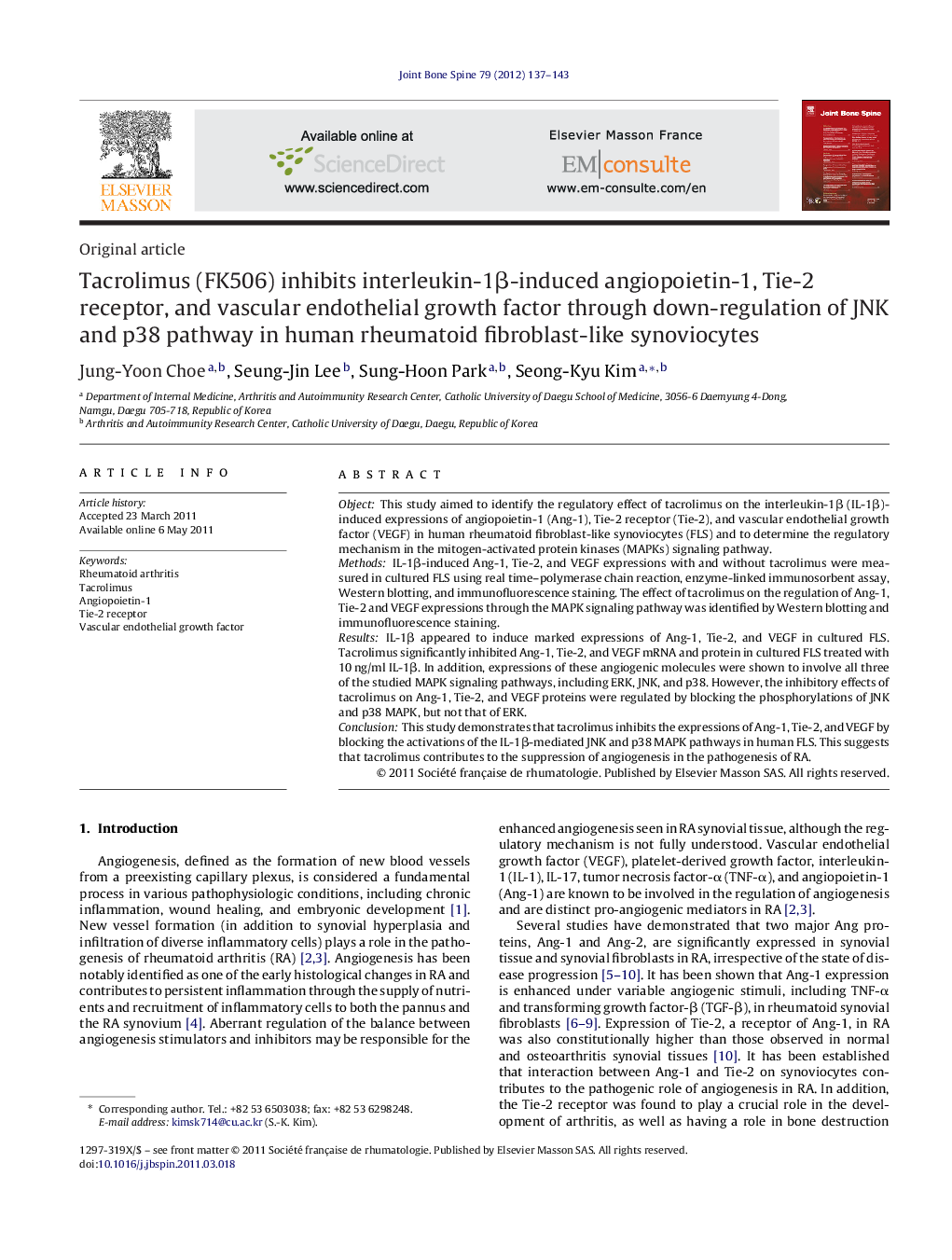| Article ID | Journal | Published Year | Pages | File Type |
|---|---|---|---|---|
| 3366229 | Joint Bone Spine | 2012 | 7 Pages |
ObjectThis study aimed to identify the regulatory effect of tacrolimus on the interleukin-1β (IL-1β)-induced expressions of angiopoietin-1 (Ang-1), Tie-2 receptor (Tie-2), and vascular endothelial growth factor (VEGF) in human rheumatoid fibroblast-like synoviocytes (FLS) and to determine the regulatory mechanism in the mitogen-activated protein kinases (MAPKs) signaling pathway.MethodsIL-1β-induced Ang-1, Tie-2, and VEGF expressions with and without tacrolimus were measured in cultured FLS using real time–polymerase chain reaction, enzyme-linked immunosorbent assay, Western blotting, and immunofluorescence staining. The effect of tacrolimus on the regulation of Ang-1, Tie-2 and VEGF expressions through the MAPK signaling pathway was identified by Western blotting and immunofluorescence staining.ResultsIL-1β appeared to induce marked expressions of Ang-1, Tie-2, and VEGF in cultured FLS. Tacrolimus significantly inhibited Ang-1, Tie-2, and VEGF mRNA and protein in cultured FLS treated with 10 ng/ml IL-1β. In addition, expressions of these angiogenic molecules were shown to involve all three of the studied MAPK signaling pathways, including ERK, JNK, and p38. However, the inhibitory effects of tacrolimus on Ang-1, Tie-2, and VEGF proteins were regulated by blocking the phosphorylations of JNK and p38 MAPK, but not that of ERK.ConclusionThis study demonstrates that tacrolimus inhibits the expressions of Ang-1, Tie-2, and VEGF by blocking the activations of the IL-1β-mediated JNK and p38 MAPK pathways in human FLS. This suggests that tacrolimus contributes to the suppression of angiogenesis in the pathogenesis of RA.
